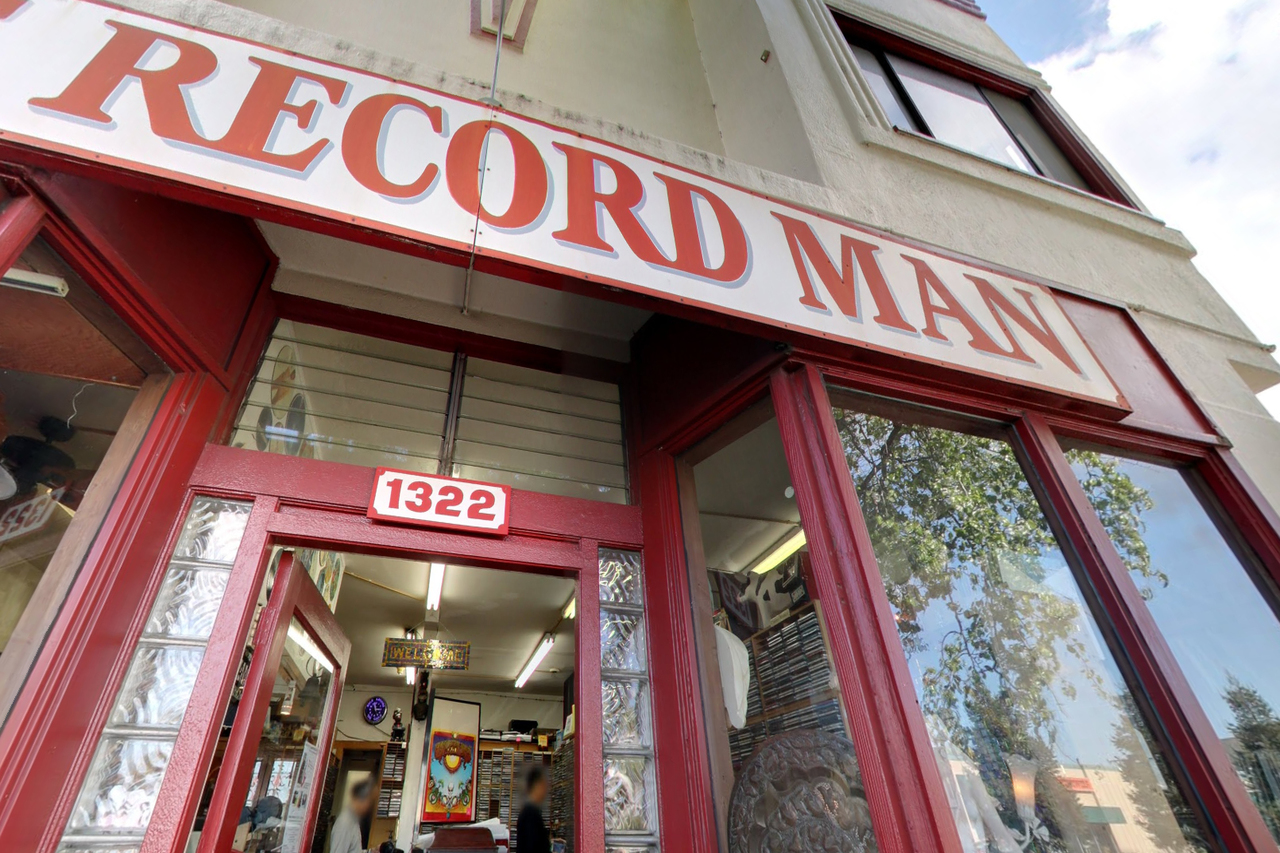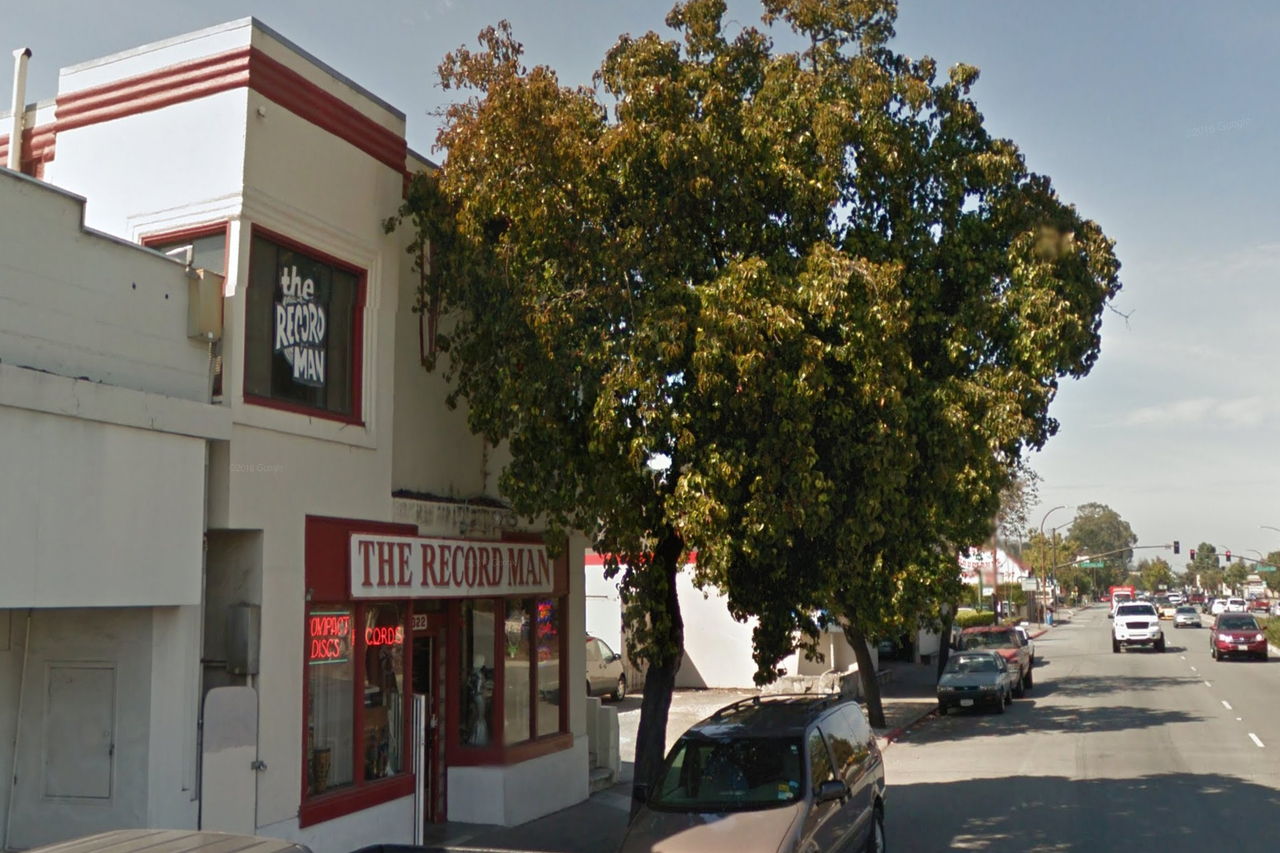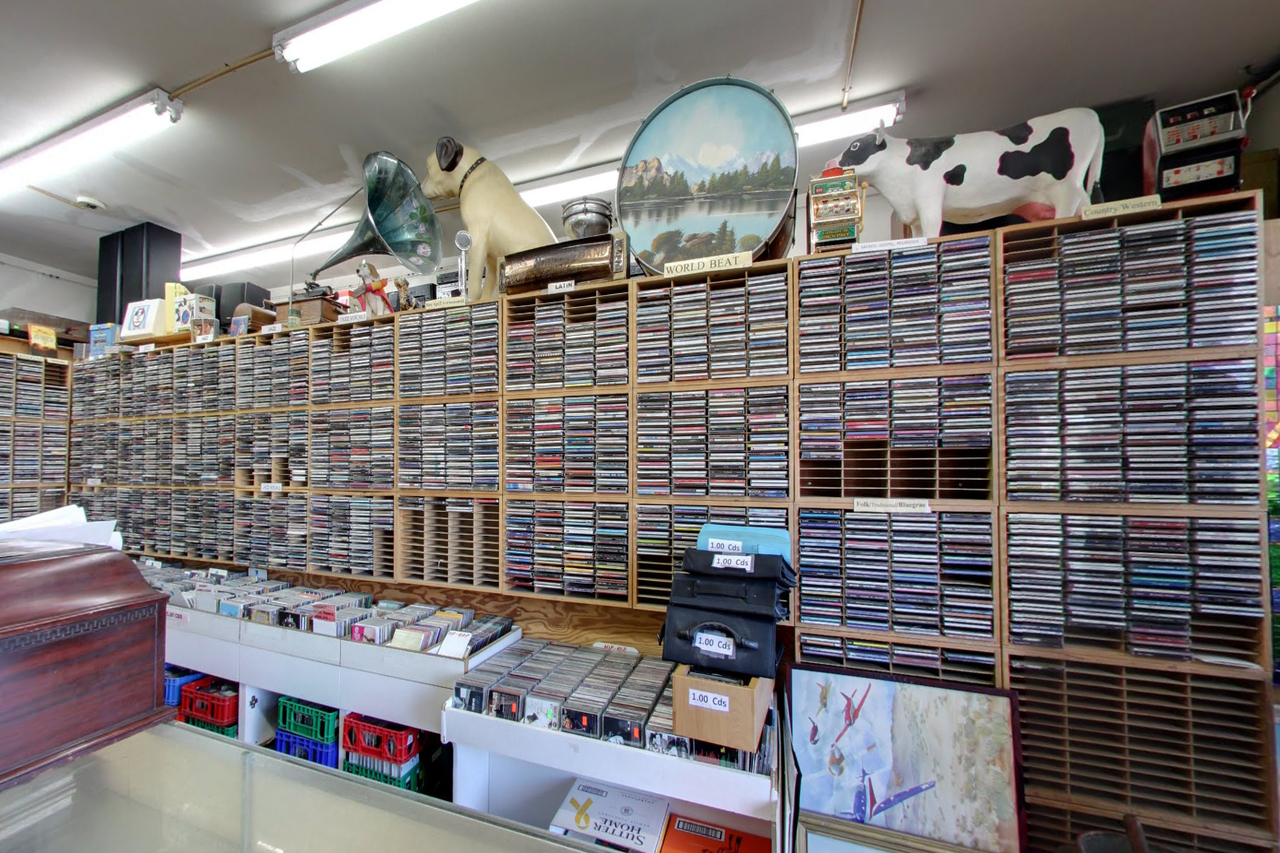Welcome to The Record Man's domain





Visit us
1322 El Camino Real
Redwood City, California
Hours
Mon-Fri : 10am-9pm
Saturday : 10am-7pm
Sunday : 10am-6pm
Contact us
archives@recordman.com
Phone
650-368-9062
Fax 650-368-2968
Records we carry
78's
Were manufactured basically from 1900 to the late 1950's. Made from shellac these records were heavy and cumbersome and broke easily. There is a collectors market for these records. They reflect all the popular music of the day - early jazz, blues, country, rock and R&B are the more popular areas of collecting. At the Record Man we currently have approximately 80,000~100,000 78- rpm records.
45's
Singles 12"
During the 1970's and l980's with the emergence in popularity of "night-club" dj's and "mobile" dj's there emerged the 12" single. Usually this format is pressed at 45rpm, with one or two songs per record but with multiple mixes of the song. One album may have one song with a dj-mix, nightclub mix, radio mix, etc., all the same song, just different versions with different beats, etc. At The Record Man we have tens of thousands of 12" singles.
45-RPM Singles 7"
These evolved at the same time as the LP. In l948 RCA developed the 7" single to compete with Columbia's LP. It found instant acceptance for use on radio stations, jukeboxes and individual consumers just wanting the "song." 45's were issued in both generic sleeves and picture sleeves. Most record dealers as well as collectors value the picture sleeves on their own - separate from the disc. At the Record Man we currently have almost 250,000 - 45-rpm singles and EP's.
33 1/3's
LP's - 12" 33 1/3 rpm records, have been available commercially since 1948. There are 33 1/3
recordings
going
back into the early 1940's and the 1930's but these are, for the most part, radio shows
(transcriptions).
Radio Transcriptions are special pressings made for radio airplay and are generally found in a 16"
format.
In the early days the LP format was on both ten-inch and twelve-inch records. Although
some
"labels" pressed 10" LP's through the 1950's the format failed to survive and the 12" LP became the
industry
standard.
At The Record Man we have hundreds of thousands of 12" LP's. We also have thousands of
16"
transcriptions.
Can't forget CDs
CDs have been with us since the late 1980's. There is a lot of earlier music that has found its way onto CD. There are literally hundreds of thousands, if not millions, of titles available on the medium. At The Record Man we do have tens of thousands of titles available. Our inventory changes on a daily basis, therefore, there are titles that we do have in stock at times, and not in stock at other times.
Record grading policies
(M)
Mint
First of all, it is doubtful that we will ever rate anything as Mint! To say that a record is Mint is to imply that it is absolutely pristine, without any flaws or imperfections if it has the slightest crease or blemish on the album cover whatsoever. Even a brand-new sealed record can be less than Mint if it has the slightest crease or blemish on the album cover. Nonetheless, we will retain the option to use the Mint rating only in very exceptional circumstances.
(NM)
Near-Mint
Allowing for even the slightest flaws in an almost perfect record would qualify it for the Near-Mint (NM) category. It should show no signs of wear and should look as though you just pulled off the shrink-wrap after purchasing it new.
(VG+)
Very-Good +
A (VG+) record will show some signs of having been played and handled by the previous owner. The surface of the record might show slight scuffs or very light scratches or slight warps that do not affect the sound of the recording. The label might show some ring wear or discoloration, but it should be minimal. Picture sleeves may have slight ring wear or slight seam split. The LP jacket may have slight signs of wear and may also have a cut-out hole, cut corner or other cut indicating that the record was taken out of print and resold wholesale or at a discount. Therefore, considering that the record may have a few minor discrepancies, it would still be considered a very desirable acquisition into a collection.
(VG)
Very-Good
On a (VG) record many of the defects found will be more pronounced. Surface noise will be noticeable, particularly on softer passages, but will not overpower the music. Groove wear will start to be noticeable and slight scratches deep enough to be felt by the fingernail will be discernible to the ear. LP covers, picture sleeves or labels may have writing on them or stickers such as name- tags, prices, or inventory numbers…or the glue residue from such stickers.
(G)
Good
A (G) record is acceptable to own until a better copy can be found. A (G) record can be played. It will have noticeable surface noise but will not skip. The grooves can show wear by discoloration. The cover may have seam splits, tape repair, writing, ring-wear or other defects.
(P)
Poor
A (P) record is just that! It may be warped or cracked and may not play without skipping. The LP cover or picture sleeve may have water damage, excessive writing damage or excessive spine splits. One should never purchase a record in (P) condition unless it is just so impossible to find that acquisition is justified. Even then, if it is a truly rare record that price should only be a fraction of the value compared to a higher graded record.
Ask Record Man
Since 1988 when I started my business, it has become clear to me that in many ways The Record Man is more
than just a business…it is a vast record library and a great musical archive. Not a day goes by without
someone approaching us about information concerning music and entertainment.
We always strive to
answer
these questions. Often we do, sometimes we don't. Sometimes we just don't have the information in our
reservoir of knowledge…and at times we simply can't spend the time to research the answer.
That
notwithstanding, if we can spare the time we will attempt to answer your questions.